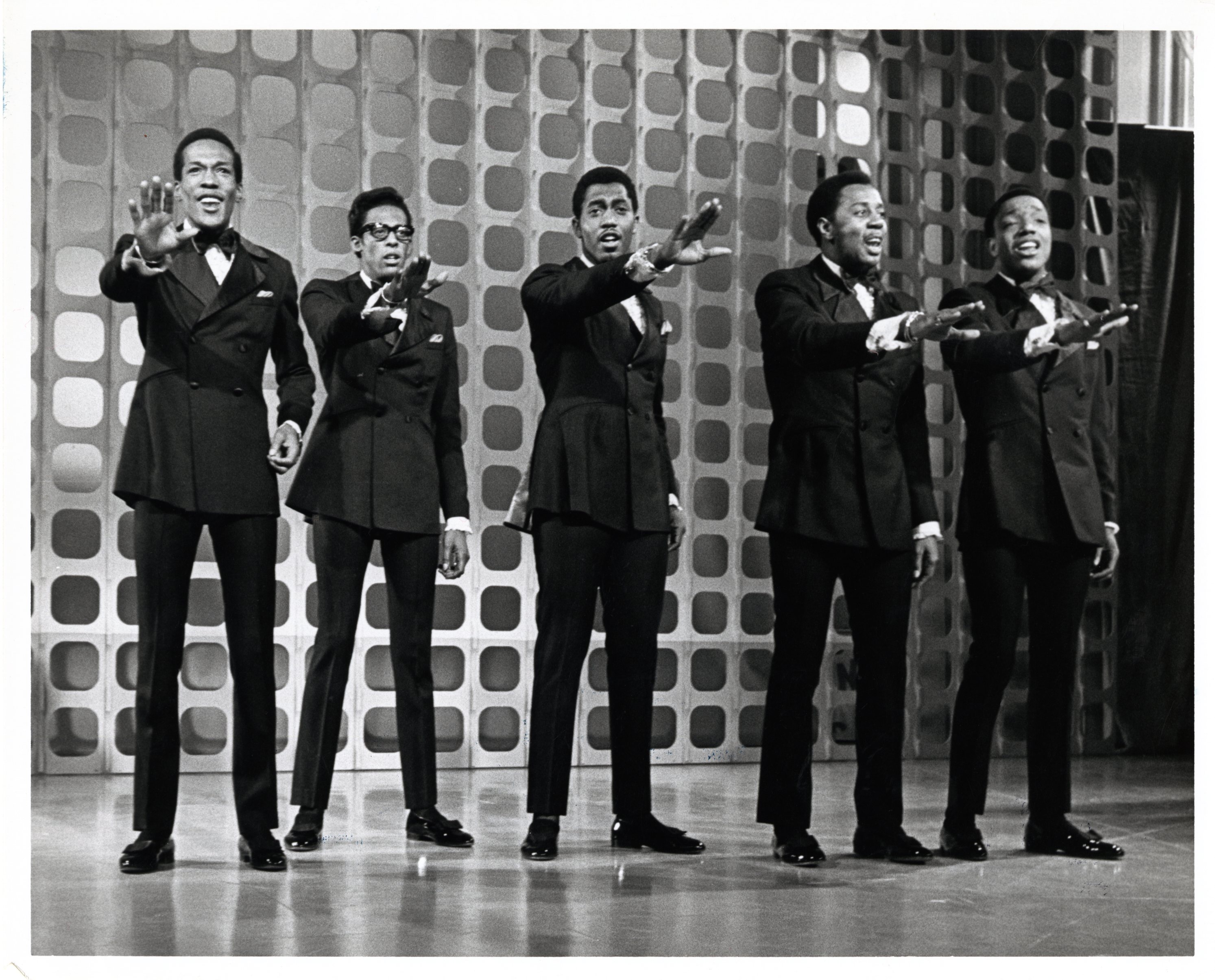The Temptations in the 1960s

The Temptations are a soul, rhythm, and blues vocal group that started in Detroit, Michigan in 1961. Quickly after signing with Berry Gordy’s Motown Records, the group’s popularity skyrocketed and they became one of the record label’s most reliable music groups for decades to come: “between 1962 and 1994 the [Temptations] had an astonishing 82 singles in the American rhythm and blues chart, 52 of which also entered the pop charts” (Bowman). In addition to their extensive discography of soul and R&B hits, the Temptations were recognized for their “slick and innovative choreography,” combining visual and auditory elements to appeal to mainstream audiences (Bowman).
In the 1960s, Motown Records promoted crossover R&B by arranging several television and film appearances (Flory 135). In the crossover movement, Black musicians were performing more consistently on mainstream media platforms, appearing as guests on variety shows, and were featured on dance networks that catered toward teenagers, such as American Bandstand, Hullabaloo, and Hollywood a Go-Go (Flory 135). Entering the realms of television and film reflected Motown’s aim to cater to a youth-oriented, mainstream market and expand the original platforms traditionally accessible to R&B artists.
Part of Motown’s rise can be attributed to its focus on visual appeals: “Motown acts danced on lip-synch oriented programs, gave interviews, and acted on variety shows and B-movies” (Flory 136). Berry Gordy wanted to increase his artists’ exposure to mainstream audiences–– American youth, especially–– to promote crossover beyond the R&B market and maximize profit.
Motown Records became a representation of the economic and social opportunities for Black Americans in the 1960s (Neal 45). Groups like the Temptations aligned with the period’s mass-market culture aiming to promote narratives of Black middle-class success (Neal 45). Motown’s artists reflected the blandness of Tin Pan Alley in both their visual and musical performances, deviating from Black culture to find acceptance in a more prominent, white market. This was especially illuminated through the way that Motown artists presented themselves on screen, holding “themselves with grace and aplomb, broadcasting a distinct form of middle-class blackness to the masses” (Flory 137). This, in particular, appealed to white audiences, who saw Black artists as a reflection of ideal “Black” Americans, abandoning the traditions that made their own culture unique in order to assimilate to the white dominant culture.